Evolution and ecology goes virtual – a complete run down of the conference!
From our virtual event reporter Magdalena Wutkowska, The University Centre in Svalbard / UiT – The Arctic University of Tromsø, @m_wutkowska
The EMBL conference on Molecular Mechanisms in Evolution and Ecology took place from 30 September to 2 October 2020. The meeting – which had its first iteration in 2008 as a workshop on Evolutionary and Environmental Genomics – has gained a broader context over time not limited to evolution and yeast, which was reflected in this year’s program.
This year for the first time the conference was held virtually. Six sessions over three days encompassed vast topics such as Evolutionary Systems Biology, Systems and Synthetic Biology, Assembly and Evolution of Microbial Communities and Experimental Evolution and Evolution of Complex Traits. Between the sessions, participants could join ‘meet the speaker’ coffee breaks, poster sessions and short talks. Below are just some of the highlights from the main sessions.
SESSION 1 – Evolutionary Systems Biology
The first session on Evolutionary Systems Biology was chaired by Gianni Liti (University of Nice, France), who first outlined the history of the meetings since 2008.

Matthew Goddard (University of Lincoln, UK) spoke about the nature of interactions between yeasts and other organisms through traits. Saccharomyces cerevisiae, just as any other organisms, evolved in the presence of other species. The existence of a trait does not have to be adaptive, and evidence of increased fitness is required to make such a statement. Goddard presented a case study of interactions between yeasts and fruit flies. Yeast produce ferments and volatiles that attract fruit flies, whereas yeast could benefit from dispersal capabilities provided by fruit flies. Some experimental evidence support the notion that the yeast – fruit fly association is mutualistic. However, recent studies showed no supporting evidence, i.e. no clear individual volatile correlated with general attraction of fruit flies. Moreover, the dispersal advantage for yeast is most likely a stochastic by-product of this interaction. Thus, the interaction is not driven by adaptation, but more likely by exaptation, which is a shift in the trait function during evolution. This talk urged us to examine the evidence for increased fitness closely, while looking for adaptive traits.
Anastasia Stolyarova (Skolkovo Institute of Science and Technology, Russia) posed the question whether epistasis shape variation within populations. Many natural populations are characterised by relatively low genetic variability; therefore, it is not possible to see strong epistatic selection between polymorphisms. Thus, to study non-random associations of alleles (linkage disequilibrium), she used the world’s most variable eukaryotic species Schizophyllum commune, which differs by up to 20% of nucleotide diversity at neutral sites. Based on 54 genomes from two distinct populations, she found that in both populations between nonsynonymous mutations were higher than between synonymous ones. Additionally, within-gene linkage disequilibrium between nonsynonymous mutations was higher when compared to that between the genes. Model simulations suggested that this phenomenon resulted from abundant epistasis.
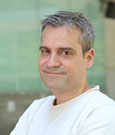
Toni Gabaldón (Barcelona Supercomputing Centre, Spain) talked about ‘origin and evolution of hybrid yeast pathogens’. Novel hybrid lineages may display innovative traits that could facilitate successful colonisation and growth in new settings, including human hosts. Emergence of pathogenesis in hybrids was studied by genomic comparisons of closely related pathogenic and non-pathogenic species within Candida clade that differ in virulence. Hybrids turned out to be not only common among some clades, but they can also survive for a long time.
Aaron M. New (Centre for Genomic Regulation, Spain) spoke about deciphering how genetic variants quantitatively change protein characteristics in a long evolutionary perspective. Predicting the outcome of mutation combinations is high in additive models, but drops in sign epistasis, which is crucial for evolution. This problem was explored in a model paralog pair of yeast genes involved in galactose metabolism and signalling: GAL1 and GAL3, that differ in their biochemical properties. The study identified a mutation in GAL3 that was responsible for sign epistasis by modifying existing destabilising effect to a stabilising one on protein folding. These mutational changes in sensing/signalling proteins are of evolutionary importance for the emergence of new phenotypes.
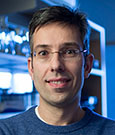
In his talk, Antonis Rokas (Vanderbilt University, USA) focused on ‘the evolution of the buddying yeast biodiversity’. His lab members and collaborators used buddying yeast (Saccharomycotina subphylum) to decipher genetic bases for metabolic diversity at an unprecedented scale. This research revised current understanding of drivers of evolution in eukaryotes, both in genomic and phenotypic aspects. As it turned out, the gene conservation was shown to be not universal. Losses of genes or traits were pointed out as important evolutionary forces, whereas horizontal gene transfer, although identified only a few times, had an essential effect on evolutionary trajectories.

Pedro Beltrao (EMBL-EBI Hixton, UK) shared novel insights on ‘evolution and functional relevance of protein phosphorylation’. Phosphorylation uses enzymes to catalyse reversible attachment of phosphoryl groups that (de)activate many types of molecules, including proteins. Phospho-regulation is of fundamental importance for post-translational protein modifications, that impacts the decision process in the cells and can be an underlying mechanism in many diseases. His research on ~500 phosphorylation-deficient mutants across 100 stress conditions explained that roughly half of them had no phenotypes and the contribution to fitness is not equal between phosphosites. Relevance of these sites for phenotypes can’t be predicted by using only one variable or feature. Advancements in understanding evolution of function of protein phosphorylation requires more insights from cell biology and mechanistic understanding.
SESSION 2 – SYSTEMS AND SYNTHETIC BIOLOGY
Kiran Patil (EMBL Heidelberg, Germany) held the second session on Systems and Synthetic Biology.
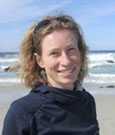
Claudia Bank (Gulbenkian Science Institute, Portugal, and University of Bern, Switzerland) discussed considerations and challenges in the process of using empirical data in fitness landscapes models in predicting evolutionary outcomes. The fitness landscape theoretical framework was proven to be a platform for testing evolutionary hypotheses. Large discrepancies in experimental data have been identified in fitness arose from single-mutations and epistasis across environments. However, it is still not clear how to reliably predict mutation effects across different environments using these models.
Jens Frickel (VIB–KU Leuven, Belgium) explained issues and uncertainties connected to mechanisms buffering mutations and its role in organisms fitness. Some gene products blur the effect of many mutations; therefore, they can act as buffer against genetic variation. The most studied buffering gene is HSP90 that assists accurate folding of mutated proteins. Genome-wide screens of yeast genes in 5000 strains allowed for identification of the gene ontology categories of genes involved in buffering activities that increase the average relative fitness. The most potent categories include chromatin binding, chromatin remodelling and unfolded protein binding. He presented directions of current and future research aiming to understand buffering mutations.
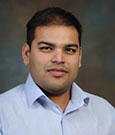
In his talk, Angad Mehta (University of Illinois at Urbana-Champaign, USA) focused to experimental explorations of mitochondria and chloroplast evolution. The endosymbiotic theory has been backed by molecular evidence from sequencing studies. However, the process of entering the cell by endosymbionts and coevolution with the host are not understood. He used synthetic biology tools to test experimentally investigate and evaluate evolutionary scenarios of bacterial endosymbiont evolution and transformation into organelles. Engineered S. cerevisiae (lacking mitochondrial DNA) and E. coli (thiamin auxotroph) were used as host (providing required metabolites) and endosymbionts (providing the ATP). Further research focused on the evolution of yeast – E.coli chimaeras and number of mitochondria maintained within the complex. At the moment he is involved in similar studies modelling the evolution of cells with chloroplasts using S. cerevisiae and cyanobacteria.
Kyle Fowler (University of California, San Francisco, USA) spoke on how regulons can change across evolutionary time. Transcription networks are a source of evolutionary novelty and contribute to plasticity; therefore, research in this field is crucial to understand evolutionary processes. In this talk, Fowler presented some of the results from studies on gain of function in interactions between two transcriptional regulators MATα2 and MXM1. Results showed that functional, cooperative interactions could most likely evolve with ease and explain diversity in structures in regulatory networks. Common intra-molecular epistasis expanded the permissive sequence space allowing for 9% of all sequences to be functional.
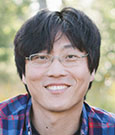
Chang Liu (University of California, Irvine, USA) presented ‘synthetic genetic systems for continuous protein evolution in vivo’. Liu Lab and collaborators developed an error-prone orthogonal DNA replication system called OrthoRep. In this system, preselected genes can be mutated at rates 100,000-fold above the genomic mutation rates. In practice it can be employed to carry continuous in vivo evolution of the preselected genes with no off-target genomic mutagenesis. OrtoRep provides countless applications to evolve useful biomolecules (enzymes, biosensors, antibodies and many more), study adaptation (governing rules, uncovering pathways of adaptation) and perhaps predict evolution in natural systems.
SESSION 3 – ASSEMBLY AND EVOLUTION OF MICROBIAL COMMUNITIES
Sara Mitri (University of Lausanne, Switzerland) chaired the first session of the day on Assembly and Evolution of Microbial Communities.
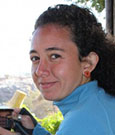
She continued with a lecture, in which she explored co-evolutionary dynamics within small bacterial communities inhabiting highly stressful environments (metal-working fluids). In particular, Mitri elaborated on interactions and stability of these communities as well as the evolution of established interactions. High toxicity promoted positive interactions between species. These interactions, however, were not constant and could be moderated by the addition of amino acids, and interactions of toxicity with food availability. Series of experiments revealed that evolving alone led to competition and genome preservation, whereas co-evolution with other species led to neutral interaction and genetic loss. Species interaction highly depend on the environmental conditions. As species adapt to each other’s presence, these interactions may weaken over time.
Daniel Machado (EMBL Heidelberg, Germany) talked about two distinct strategies developing in co-occurring microbial communities explored by genome-scale metabolic modelling. Microbial communities showed striking polarisation at the trade-off landscape between cooperation and competition. With increasing size of microbial communities, members displaying one of these strategies differed in multiple aspects such as number of metabolic genes, nutrient requirements, metabolic dissimilarity, abundance and phylogenetic distance. Moreover, competitive and cooperative communities were shown to have distinct habitat preferences. Communities displaying either of these strategies respond differently to both abiotic and biotic perturbations in their environment.
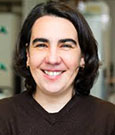
Isabel Gordo (Gulbenkian Institute, Portugal) explained some aspects of gut bacterial communities evolution in mice models. She focused on two main topics: evolution of a single dominant strain of E. coli and evolution of an invader strain in the coexistence with resident E.coli. Studies on the first case revealed that both balancing selection and clonal interference were wide-spread within the guts. Coexistence of populations of bacteria with increased mutation rate and population without them can last for a long time. The effect of deleterious mutations in vitro was higher than from in vivo experiments, that lead to a conclusion that probably the deleterious effect of mutations was reduced by biotic interactions and is even lower in species-rich setting. Experiments on the second scenario showed that in the initial stages of the evolution of an invader was dominated by phage-mediated horizontal gene transfer. At later stage, mutations started to accumulate. In the last part of her talk Gordo emphasised the need of long-term evolutionary studies of these scenarios and presented selected unpublished results from her lab.
Jona Kayser (Max Planck Institute for the Science of Light, Germany) described mechanisms in which mechanical forces can affect evolution in dense cellular populations. These populations are found in yeast colonies, but also biofilms, embryos or tumours. Collective motion of cells in the dense colony moves other cells with them. Slow-growing mutant populations with drug resistance can be carried to the rim of the colony by fast-growing yeast that are sensitive to drugs. In case of a treatment during infection application of the drug could stop the growth of neighbouring wild populations and caused resurgent growth of the mutants that were drug-resistant and not outcompeted by fast-growing wild types. These mechanisms may lead to increased understanding of treatment design in antibiotic resistance infections and tumours.

Wenying Shou (Fred Hutchinson Cancer Research Center, USA) talked about disentangling molecular mechanisms causing rapid evolution of new metabolic interactions in cells undergoing nutrient-growth dysregulation. Through conserved mechanisms in eukaryotic cells, nutrients control eukaryotic cell states promoting or ceasing growth. During unnatural auxotrophic limitation(s) this regulation might fail, resulting in nutrient-growth dysregulation. In this state cell growth is not arrested despite of limitation in resources. Shou presented experimental evidence that cells in this state release unusual metabolites. As a consequence, these released metabolites may provide an unforeseen way of rapid evolution of new metabolic interactions with other organisms.
Tami Lieberman (Massachusetts Institute of Technology, USA) spoke on adaptive evolution of skin commensal bacteria. In Liberman’s research tracking evolution, instead of sampling over a long period, many colonies were sampled from different pores in a single time point. Some bacterial species can adapt by de novo mutations in healthy people while in other bacteria inhabiting human face there were no signals of adaptive evolution. Mutational rate was much lower compared to rapid spreading on the face skin. Pores can be seen as separate islands, where location within the pore can predict success more than fitness does. Populations within pores most likely are descendants from a single ancestor. Some of the strains expanded and diversified rapidly on individual humans. People are colonised by multiple lineages, probably coming from multiple independent colonisation events.
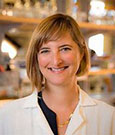
In her talk, Rachel Dutton (University of California, San Diego, USA) focused on the ecological interactions in cheese-rind communities. Dutton’s Lab uses cheese rind biofilms to deconstruction and reconstruction of the system in order to understand microbial communities. They found many species-specific effects within these communities; however, some effects were found conserved across species. Over the years, the lab brought evidence for fungi being essential players impacting bacterial biology by releasing enzymes, siderophores, volatiles, antimicrobials and by increasing bacterial mobility.
The next session was a roundtable discussion on Assembly and Evolution of Microbial Communities moderated by Jun-Yi Leu (Institute of Molecular Biology, Taiwan). The participants Maitreya Dunham (University of Washington, USA), Isabel Gordo (Gulbenkian Institute, Portugal), Gianni Liti (University of Nice, France) and Nassos Typas (EMBL Heidelberg, Germany) discussed the past, present and future of the field. They emphasised that although there have been many substantial advancements in high-throughput sequencing, there are some issues that are still lacking full understanding, for instance, mutations, gene copy numbers and its consequences for the fitness of organisms. Experiments on laboratory strains of organisms explore only a small proportion of mechanisms and genetic diversity. Thus, future research should focus beyond that. The complexity of microbial systems is high, they are impacted by many factors, and they themselves impact their surroundings and other organisms. Therefore, there is a profound need for collaboration between different scientific disciplines to produce novel cross-disciplinary approaches, efficient data integration methods and solutions to long-lasting problems. Some of the significant challenges in the field include developing efficient training programmes that would enable students to receive well-rounded education encompassing a variety of disciplines. Finally, current knowledge should be more efficiently transformed into real-life solutions and applications that could potentially tackle some of the critical global issues.
Career development
The third day of the conference started with a career development session. Guests Claudia Bank (Gulbenkian Science Institute, Portugal, and University of Bern, Switzerland) and Daniel Machado (EMBL Heidelberg, Germany) discussed critical issues in carrier development and its maintenance. Career paths can be very different and can involve switching between disciplines, between academic and non-academic sectors. Much of the discussion was focused on the application process, its stochasticity and not being discouraged by rejections. They highlighted the importance of mindful and self-compassion approach towards work, especially in academia. Keeping a work-life balance might be often overlooked, although it is an important issue that can affect well-being and also motivation.
SESSION 5 – EXPERIMENTAL EVOLUTION

Chaired by Jun-Yi Leu (Institute of Molecular Biology, Taiwan), the session opened with a presentation on yeasts’ synthetic genomic applications by Lars Steinmetz (EMBL Heidelberg, Germany). The talk started with a summary of discoveries and advancements in genome editing. Manipulating regulation of transcription factors were used to increase understanding of adaptation to heat in yeast. Extensive work on engineered yeast cells able to on-demand reorganisation of their genomes helped to study selection changes in transcript isoforms that can occur after these reorganisations. However, many questions in genome editing and design regarding the location of genes and design principles still remain open.

Sarela Garcia-Santamarina (EMBL Heidelberg, Germany) shared her research on current understanding the interplay of drugs and gut microbiome in vitro. Experimental evidence showed high prevalence of drugs affecting growth of bacterial strains, whereas bacteria can significantly alter concentration of many drugs. It is not clear if these effects observed in monocultures are consistent in communities. Comparing responses of monocultures and communities in response to different drugs showed emerging community behaviours, such as sensitisation of drug-tolerant strains and protection of drug-sensitive strains. These emergent behaviours were concentration-dependent and disappeared when concentrations increased. High levels of these stressors disrupt community protective traits. The protective properties can be partly explained by drug metabolisation.
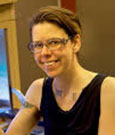
Sinéad Collins (University of Edinburgh, UK) spoke on the use of experimental evolution to understand microbial response to climate change. Oceans’ phytoplankton is composed of diverse organisms that act as “tiny adaptor plugs” between organic and inorganic worlds. These two worlds undergo shifts due to climate changes, and by using one methodology, it is impossible to predict how would they react in short and long-time perspective. She employed microcosm experiments that provide direct links between cause and effect in manipulation studies mimicking climate change, i.e. temperature and CO2 concentrations. Using these tools, the studies explored epigenetic transmission in adaptation to changing and fluctuating environmental conditions.
Christopher Large (University of Washington, USA) spoke on genomic stability and adaptation of beer brewing yeasts during serial repitching in the brewery. Repitching (using yeast many times over multiple fermentations) serves as a method to perpetually maintain yeast populations in breweries, and it is a suitable procedure to study adaptation to the brewery environment by looking at copy number variation, mitotic recombination single nucleotide polymorphisms and insertions/deletions of bases in the genome. In these conditions brewing yeast continuously underwent domestication at a fairly rapid rate. Many related strains in different breweries adapting over time displayed the same structural variations that included mitotic recombination of specific chromosomes and aneuploidy.
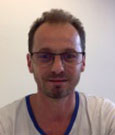
Gilles Fischer (Sorbonne University – French National Centre for Scientific Research, France), talked about transient hypermutator subpopulations in yeast colonies. A continuum model of genomic evolution of cancer predicts three main ways in which aberrations (including mutations) accumulate a gradual, punctuated and catastrophic modes. Often, we think about genome evolution as a gradual accumulation of mutation. Yeast populations contain hypermutator subpopulations that originate from transient phenotypic mutator cells. These subpopulations increased in size under stressful conditions such as oxidative stress and could lead to systemic genome instabilities illustrating the possibility of the catastrophic mode of genomic evolution.
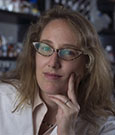
Virginia Cornish (Columbia University, USA) spoke on ‘expanding the synthetic capabilities of yeast’. Cornish Lab uses engineered yeast capable of carrying out in vivo mutagenesis and selection steps of directed evolution. These yeasts have been engineered to perform new functions that made them useful in many applications. For instance, they were used as synthetic biosensors to create cheap colorimetric essays that can be used for detecting pathogens. This and further work in this area can lead to many therapeutic applications in the future.
SESSION 6 – EVOLUTION OF COMPLEX TRAITS
Maitreya Dunham chaired the last session of the conference, which focused on the evolution of complex traits.

Joseph Schacherer (University of Strasbourg, France) talked about S. cerevisiae-wide survey of the evolution of complex traits. Existing knowledge on architecture, inheritance and phenotypic expressivity of complex traits is still poorly understood. Genomes and phenotypic resources generated for over a 1000 isolates of S. cerevisiae served as a platform to select strains for pairwise crossing and examination of complex traits in resulting hybrids. These hybrids were grown under 50 growth conditions in order to obtain phenotypic distribution of the offspring. Most of the cross/condition combinations were shown to have complex inheritance. The complexity across traits was found highly variable. The expressivity of complex traits was both variable and dynamic across strains in different conditions.
Melania Jennifer D’Angiolo (Institute for Research on Cancer and Aging, IRCAN, France) talked on the origin of genomic introgressions from a yeast living ancestor. Introgressive hybridisation is an important mechanism in evolution of species across kingdoms. They were frequently identified in many yeast populations; however, it remains unclear how they appeared in reproductively isolated species. In her research, D’Angiolo found a coexistence of hybrid ancestor and its descendants inhabiting the same ecological niche. It was proposed that the underlying mechanism involved genomic instability that made possible for the hybrids to overcome sterility.
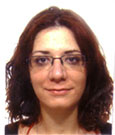
Irene Stefanini (University of Turin, Italy) spoke about research on buddying yeasts’ associations with insects. S. cerevisiae are important components of grape berries microbiota; however, their numbers depend on presence of the grapes and fluctuate according to the seasons. They are rarely found on unripe grapes, but their number rapidly increases towards the end of the season. For a long time, it was not clear where do these organisms overwinter and how do they get back on grape berries. Yet, a complete local variability of yeasts was found in insects’ guts where they could overwinter and be transported back on the grape berries when they formed in a new season. Rarely observed yeast mating in nature was promoted in insect guts, including wasps. Recent genome-wide association of S. cerevisiae from wasp guts started to shed light on mutations important ecologically relevant fungal phenotypes.
Lucy Xie (Stanford University, USA) spoke on a newly described drug resistance mutation-independent mechanism found in Candida albicans. In contrary to mutation-dependent, the new high-frequency drug resistance called pararesistance involves epigenetic modifications. Common antifungal (fluconazole) in low doses induced pararesistance in up to 10% of cells. These numbers increased after addition of other substances. The induced pararesistance was still observed after more than 100 generations cultured in the absence of the drug. Understanding the intricacies of this mechanism could decrease medical treatment failures in fungal infections.
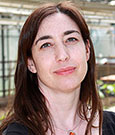
Tatiana Giraud (Evolution et Systématique Laboratoire ESE, Université Paris- Sud XI, France) spoke on “multiple convergent events of mating-type loci linkage through different rearrangements”. Giraud focused on smut fungi beneficial gene linkages called supergenes that provide adaptation advantages. Presented studies on prevalence, formation and evolution of supergenes increased understanding of this little-explored field.
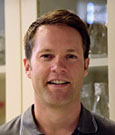
Adam M. Feist (Denmark Technical University) spoke on an ongoing cross-disciplinary automated project for understanding adaptive laboratory evolution. The project consists of two main components hardware for high throughput culturing and complex experimentation procedures to obtain information on mutations and conditions in which they arise and with a customised software for processing the output data. Acquired experimental data are subsequently organised, described, analysed and become part of a database (ALEdb). A multi-scale annotation framework aims to identify critical mutations at different conditions and scales (from binding sites to large aggregated features such as COGs). Feist also explained the current focus on using the data for design and engineering purposes, as well as expanding the breadth and scope in the database. ALEdb is available as a web-based platform https://aledb.org/

After the last session, Kiran Patil held a speech with closing remarks and future outlook. Attendees were given access to all the conference materials, including posters and pre-recorded talks for two weeks after the conference had ended.